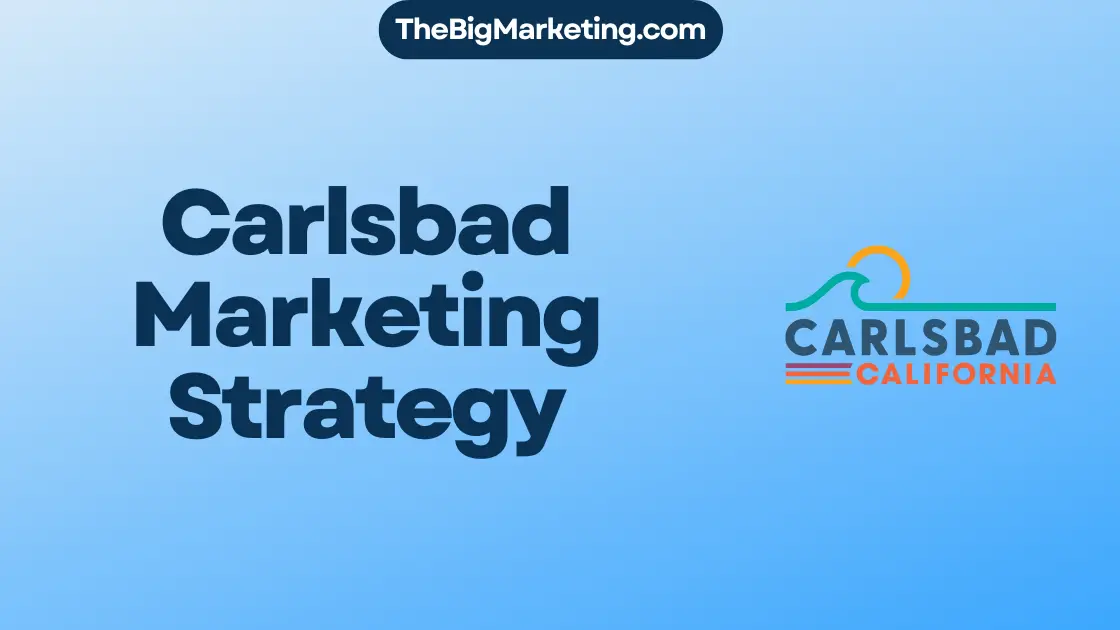Understanding strategic online marketing (SOM) is crucial for businesses today. It’s about getting the most out of your online activities. SOM includes SEO, content marketing, and social media strategies.
Using SOM smartly helps businesses shine online. They can make their websites better, become more visible, and connect with their target audience. This full-on marketing approach grabs a chunk of the digital market, boosts interactions with customers, and helps businesses grow.
We’re going to dive into SOM and its importance in today’s marketing. Let’s talk about what makes up SOM and give examples. This will show how businesses use these strategies for success.
Key Takeaways:
- SOM encompasses a range of digital marketing strategies aimed at maximizing online presence and driving business growth.
- Understanding and leveraging SOM can help businesses optimize their website, increase visibility, and reach their target audience.
- Examples will be provided to illustrate how businesses can apply SOM strategies to achieve marketing success.
What is TAM, SAM, and SOM?
TAM, SAM, and SOM are key terms in marketing. They help businesses understand market sizes, revenue chances, and growth opportunities. These concepts shed light on the market and guide strategic choices.
- TAM (Total Addressable Market): TAM is about the total possible market for a product or service. It’s the highest revenue a company could get by selling to every potential customer. By calculating TAM, companies can see the full market size and the possible money to be made.
- SAM (Serviceable Addressable Market): SAM is a part of TAM that a business can actually serve. It looks at things like where the business can work, who it’s for, and part of the market to focus on. SAM helps companies find the right market segments for them.
- SOM (Serviceable Obtainable Market): SOM is about what part of the market a company can realistically win. It takes into account competition, pricing, and how the market is doing. SOM shows the market slice a company can expect to attract.
Knowing TAM, SAM, and SOM is key for marketing plans, setting revenue targets, and understanding growth chances. By diving into these metrics, companies can pinpoint their market, set clear goals for market share, and direct their marketing to the right customers.
Why are TAM, SAM, and SOM Important?
TAM, SAM, and SOM are key metrics for any business. They help understand market size, revenue chances, and growth potential. Knowing these can attract investors and create a solid business plan. Here’s why they’re essential:
TAM: Understanding Market Size
The Total Addressable Market (TAM) shows the total market demand for a product or service. It helps businesses see how big the market is and the possible revenue. With TAM, companies can pinpoint competition levels, find new customers, and make strategic marketing plans.
SAM: Focusing on Target Segments
The Serviceable Addressable Market (SAM) is part of TAM a business can actually target. It helps focus on certain customers. By zeroing in on SAM, companies can customize their strategies for these groups. This makes better use of resources and sets up for success in specific niches.
SOM: Realistic Market Share
The Serviceable Obtainable Market (SOM) shows the market share a business can realistically get. It takes account of competition and market limits. SOM gives a true view of what market share is achievable. Knowing this helps set sensible growth goals and make smart choices for market success.
Using TAM, SAM, and SOM helps companies match strategies with market truth. It helps them tell investors their growth story and make decisions based on facts. This is key for driving success.
How to Calculate TAM, SAM, and SOM
To figure out your TAM (Total Addressable Market), SAM (Serviceable Addressable Market), and SOM (Serviceable Obtainable Market), you need to do some deep market research and analyze the data. These metrics help businesses understand their market’s size and how they can grow.
For TAM, start with a bottom-up analysis. Find how many potential customers are in your market. Then, multiply that by the average money each customer could bring in a year. This way, you’ll see the most money you could possibly make.
To work out your SAM, take your TAM and narrow it down. Consider factors like the market situation, how well-known your brand is, and how much you have to spend on marketing. This shows the part of the market you can actually reach with what you offer.
Calculating your SOM is the last step. This involves taking your last year’s earnings and dividing it by your industry’s reachable market back then. Multiply this by the current year’s reachable market. It gives a clear picture of the market share you might get, given the competition and other market aspects.
Using these steps and a detailed market analysis, companies can fully understand their potential in the market. It helps them set realistic goals for making money and strategies for growth.
| Metric | Calculation |
|---|---|
| Total Addressable Market (TAM) | Total number of potential customers x Average annual revenue per customer |
| Serviceable Addressable Market (SAM) | TAM filtered based on market landscape, brand awareness, and marketing budget |
| Serviceable Obtainable Market (SOM) | Revenue from previous year / Industry’s serviceable addressable market from that year x Industry’s serviceable addressable market for the current year |
How to Include TAM, SAM, and SOM in Your Business Plan
Adding TAM, SAM, and SOM metrics to your business plan is key for understanding your market potential and revenue opportunities. These metrics help you define your target market. They also let you set and reach your revenue goals.
TAM, or Total Addressable Market, shows you the overall market size and the maximum revenue your business could get by serving this market. Having TAM in your plan lets you see how attractive the market is. It also helps you find customer segments you haven’t reached yet.
SAM, or Serviceable Addressable Market, zooms in on the part of the market your business can actually serve. When you include SAM in your plan, you get clearer about who your audience is. You can then focus your marketing to reach these customers better. This approach improves your marketing efforts and increases your chances of attracting customers.
- TAM: Maximum revenue potential of the market as a whole
- SAM: Subset of the market that can be effectively served
SOM, or Serviceable Obtainable Market, is about the share of the market you realistically can get. This takes into account things like competition and the overall market conditions. Adding SOM to your plan shows you understand your competitors. It helps you set realistic revenue goals based on your place in the market.
By including TAM, SAM, and SOM in your business plan, you’re showing investors that you have a solid understanding and a realistic strategy for growth. These metrics give insights into market size, competition, and potential revenue. They help you make smart decisions and set goals you can actually reach.
| Metrics | Definition | Importance |
|---|---|---|
| TAM | Total Addressable Market | – Determines maximum market revenue potential – Identifies untapped customer segments |
| SAM | Serviceable Addressable Market | – Focuses on the specific market subset that can be served – Enhances targeted marketing efforts |
| SOM | Serviceable Obtainable Market | – Represents the realistic market share that can be captured – Sets achievable revenue goals |
Examples of TAM, SAM, and SOM
Let’s look at an example to understand TAM, SAM, and SOM better. Imagine a startup is launching kitchen storage products for U.S. households earning above $50,000 annually. The TAM calculates the total number of these households times their average spend on kitchen storage. SAM narrows down TAM, focusing on specific segments and how well-known the brand is. SOM is about how much of the market the startup realistically expects to get, considering competition and niche factors.
This example gives us a clear view of how TAM, SAM, and SOM help gauge market potential and identify growth chances.
Why TAM, SAM, and SOM are Important for Investors
TAM, SAM, and SOM are key in drawing investors. They offer insights into market potential and growth chances. These metrics help investors see the business’s upside and lessen risks.
By learning about TAM, investors understand the total market size and income possibilities.
SAM shows investors the addressable market a business can serve. It helps identify target segments. This makes it easier for investors to see market opportunities within the target area.
SOM tells investors about the market share a business might get. Considering competition and market factors, it helps in evaluating market share potential. This helps in seeing how well a business can sell.
Investors use TAM, SAM, and SOM to check if a business looks promising. These metrics show a deep understanding of market dynamics. They also show that the business has a solid growth strategy, making investors more confident.
Using TAM, SAM, and SOM helps businesses show their value to investors. They offer insights into how a business can lessen risks and grow. In the end, these metrics help investors make smart choices to support businesses with great potential to expand.
Tips to Maximize SOM and Increase Market Share
Growing your market share is crucial for business success. It involves strategic efforts in key areas. Here are practical tips to help achieve these goals.
1. Define a Unique Selling Proposition (USP)
Standing out is vital in today’s market. Define what makes your business unique. This compelling reason will make customers choose you over others. Communicating your USP attracts more customers, growing your market share.
2. Implement a Competitive Pricing Strategy
Right pricing attracts more customers. Develop a strategy that offers great value at lower prices. Understand your competitors’ prices through research. By setting ideal prices, you attract more buyers and grow your share.
3. Focus on Exceptional Customer Service
Great customer service keeps customers coming back. It makes your business different in a crowded market. Train your team to offer personalized, quick help. Excellent service builds a loyal base, increasing your market share.
4. Leverage Digital Marketing Strategies
Digital strategies boost your market share. Build a strong online presence with SEO, content marketing, and social media. These methods help you reach more people and enhance brand awareness. Digital efforts are key to growing your share.
Apply these tips to grow your SOM and market share. Always watch market trends and customer needs. Staying flexible and adapting to changes is essential for growth.
The Benefits of TAM, SAM, and SOM in Marketing Strategies
TAM, SAM, and SOM are essential for crafting successful marketing plans. They help companies understand who to sell to, the current market trends, and how to improve their marketing. This understanding helps businesses reach their audience more effectively.
TAM, or Total Addressable Market, shows the potential market size and growth. It tells companies about the biggest opportunities for making money. By understanding TAM, businesses can make specific marketing plans to get a bigger piece of the market.
SAM, or Serviceable Addressable Market, points to a business’s specific market segment. It helps companies focus their messages and products on the right people. This focus makes their marketing more relevant and successful, increasing customer interest and sales.
SOM, or Serviceable Obtainable Market, is about knowing how much of the market a company can realistically get. It considers competition, pricing, and the market’s state. Using SOM helps companies set goals they can actually reach and plan for growth that fits what they can do.
Using TAM, SAM, and SOM lets companies make smart choices that improve their marketing results. These tools offer insights into how markets work, who the competitors are, and where there is room to grow. They guide businesses in shaping strategies that get the best results.
Key Benefits of TAM, SAM, and SOM in Marketing Strategies:
- Identify target audience: TAM, SAM, and SOM help businesses understand their ideal customer profile and develop targeted marketing campaigns.
- Understand market trends: Accurate market analysis using these metrics enables businesses to stay updated on evolving market trends and adjust their marketing strategies accordingly.
- Optimize marketing efforts: By leveraging TAM, SAM, and SOM, businesses can optimize their marketing campaigns to achieve better engagement, conversion, and ROI.
- Set achievable goals: SOM provides businesses with a realistic measure of market share that can be captured, allowing for the setting of achievable marketing goals and growth planning.
By focusing on TAM, SAM, and SOM, businesses can better navigate the market. They make smart decisions, reaching the right people more effectively. This leads to better marketing strategies and strong, lasting business growth.
Conclusion
In short, SOM in Marketing is vital for companies wanting to grasp their market’s scope. It helps in setting revenue targets and crafting potent marketing tactics. By using TAM, SAM, and SOM, they get key insights into market size, competition, and growth chances.
Understanding their market enables businesses to check if their products or services will be successful. It also helps in drawing investors and making smart choices rooted in market insights. With the help of TAM, SAM, and SOM in their planning and marketing, companies can boost their market presence. This leads to growth and hitting their revenue objectives.
Using the internet wisely is also part of leveraging SOM in Marketing well. It lets businesses use digital ways to improve online visibility. Techniques like SEO, content marketing, social media campaigns, and online ads help touch base with their audience effectively. This drives growth.
To wrap it up, knowing and wisely using SOM in Marketing is key for lasting success and reaching revenue targets for companies.







